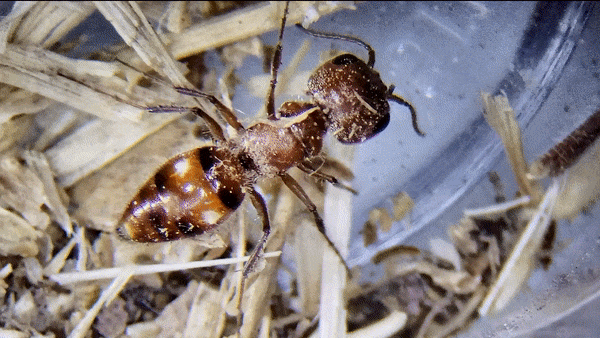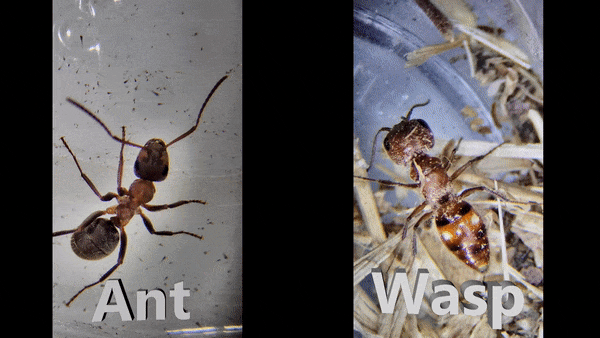Hello folks who wonder if baby corns are the veal equivalent of the vegetarian world,
Excuse me Ma'am! Excuse me Sir! Can you spare a moment to help me with identifying something? I need your help with finding out which of these ants are males. The ants workers union recently received several complaints about male ants displaying toxic masculinity at the workplace thus causing a hostile work environment for the workers. Can you help identify the perpetrators and help us put a stop to this toxic work environment by spotting one from the following videos?
Option A:
Oh, this looks like typical aggression only a male would depict, wouldn't you say? Look at how those ants are treating those aphids, like the aphids are beneath them. Why not vote for this one since it is so obvious.
Oh, the classic case of a sneaky male plotting some revenge on his colleagues because they don't support his same Football team. I would suggest you vote for this one.
If you had any doubts for the earlier options, there should be none now. Two males fighting to show who's the boss. I can smell the testosterone in the air by just looking at this. Can it get anymore stereotypical? Alright let's cast our vote for this one.
Now, Option C was the most obvious choice wouldn't you say. Despite how close it would look to what toxic male ants would be doing during their daily lives, that is not the answer as well. Those are a couple of Winter ant female workers from neighboring colonies fighting each other for trespassing or who is Ed Sheeran's biggest fan.
"Psst! Want to know a secret?".
Wait, wait, Wait! I have so many questions. How do you tell a male ant from a virgin queen ant, since both have wings? For one, male ants are much smaller than virgin queen ants. Also, male have a structure called claspers on their abdomen used to hold the female in place during mating.
While some of the males were searching for the queens on the ground, one of the queens was stuck on a nearby spider web.
And this is why kids, you shouldn't start to panic when you are in a sticky situation. The more the queen ant struggles, the more vibrations are sent to the Orb weaver spider waiting on the sidelines. And then in a moment, it comes in for the swoop and starts wrapping its gift.











No comments:
Post a Comment
Did you learn something new in this post? Let us know in the comments below